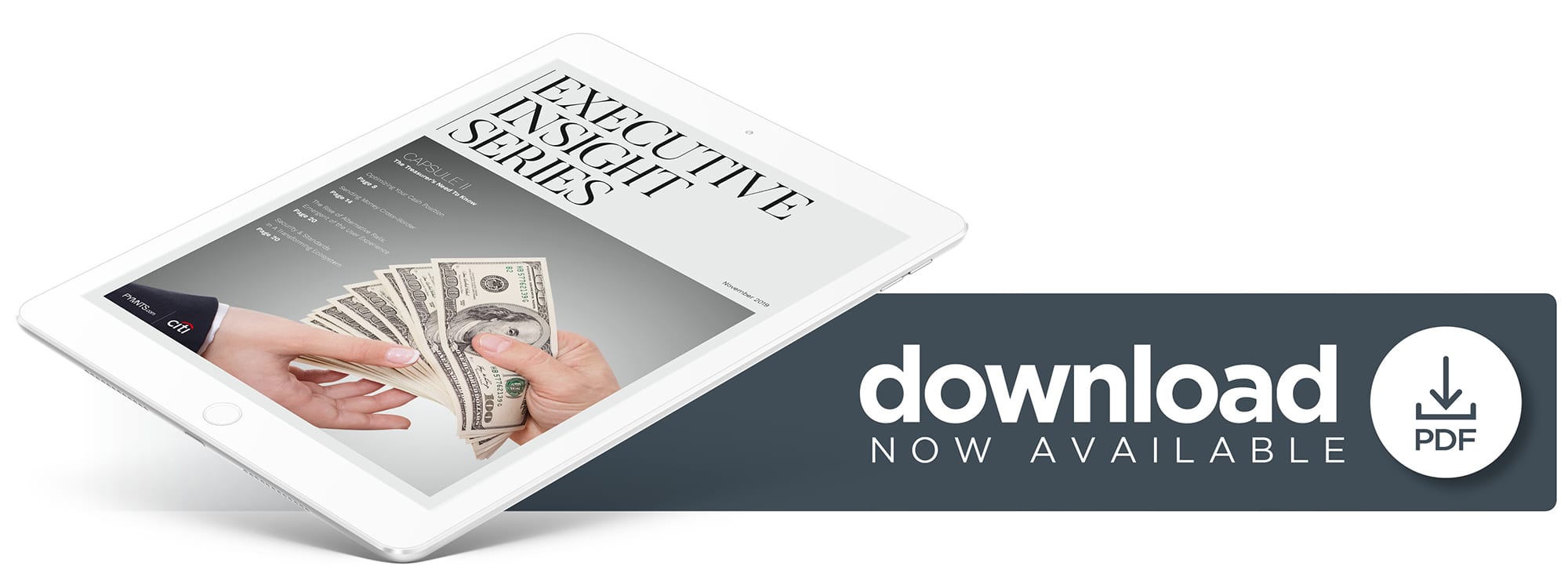Citi: Treasurers, Embracing RTP’s Bright Future — While Bracing For Dark Days Ahead

It’s said that change is the only constant in life.
So it is with business, with payments, with the ways we pay — when and even where and certainly how.
The ripple effects of the digital age have touched the ways firms manage cash, and by extension, the ways treasury professionals approach their day-to-day activities in managing that cash.
In the latest iteration of the “Executive Insight” series, executives at Citigroup take stock of the treasury function evolution from a somewhat predictable, visible monitoring of cash positions on a daily or weekly basis, marked by batch processing … to today’s necessity of managing cash in near-real-time, sometimes pressure-cooker situations.
The overarching themes that cut across these interviews: The speed of payments is, of course, increasing. The scope of payments? That is broadening, too, and crossing borders.
The treasurer’s role has become one that needs to be proactive and strategic.
The age of bankers’ hours is officially over.
Among the Highlights:
As faster payments schemes proliferate around the world — there are more than 50 separate initiatives underway globally at last count — businesses must adjust to the notion of cash settling across business coffers several times a day. And as Citi Treasury Advisory Group Head Ron Chakravarti tells Karen Webster, the shift has been one from knowing what’s in the accounts, to knowing what will be there, and when.
The change is coming and can be anticipated, across C2C to B2C to B2B — and providing at least some sort of roadmap.
You certainly need a map, too, as payments are increasingly crossing borders and time zones, and FX rates suddenly become par for the course.
Amit Agarwal, global head of cross-border payments at Citi, takes stock of the globalization of supply chains (geopolitics notwithstanding). Here, technology (through application programming interfaces (APIs) and financial institutions (FI)/FinTech partnerships) is a boon that helps firms expand their reach into new markets — integrating payments and information offering transparency into where funds are flowing.
But with the push into new markets, into new types of transactions where eCommerce and B2B are always on, Anupam Sinha, global head of domestic payments and receivables at Citi, says banks must navigate the demands of separate, far-flung markets.
Banks must not only respond to changing customer demands, but they must also anticipate future needs — all amid government-led and private instant payment offerings.
Looking toward the future also means acknowledging you don’t know what you don’t know. For treasury professionals, that means getting ready for the risks that lie ahead with real-time payments. There can be literal dark days ahead.
As Mark McNulty, managing director, head of clearing and FI payments at Citi, states, “the risks of running a corporation, and specifically of executing a number of financial functions, are greater than they ever have been before.” The balancing act, as always, will be one between convenience and security for end-users — and knowing where the external threats lie. He lays out several lines of defense.
To adapt a line from Bob Dylan, the treasurers’ times are a-changin.’
Read on to see where those changes might lead.

